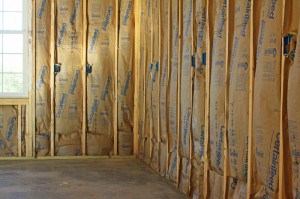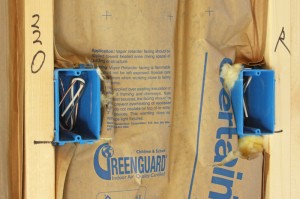 It’s been a long winter of construction at my home, but we’re finally nearly done adding a new garage/workshop to the property. As you can probably guess, I can’t wait to get the lights on and the machines moved in! For four months, I’ve felt like a kid trying to fall asleep on Christmas Eve night.
It’s been a long winter of construction at my home, but we’re finally nearly done adding a new garage/workshop to the property. As you can probably guess, I can’t wait to get the lights on and the machines moved in! For four months, I’ve felt like a kid trying to fall asleep on Christmas Eve night.
This week, electrical receptacles and wiring were roughed in — a job I would have done myself if this building hadn’t been contracted out. I’m one of those DIYers that actually likes doing electrical work. But this time, I’m really glad I didn’t do it myself. Here’s why: the electrician had a much better plan than I did.
Forty-plus years of doing residential and commercial wiring teaches a guy many things. This time, I’m lucky enough to benefit from his experience. His advice: “We put shop outlets 44 inches up from the floor. Standard backsplash height for a base cabinet. Then you’ll never have to reach behind things to plug stuff in.”
A brilliant idea. Simple and smart.
In my last shop, I ran the outlets at the typical wall height — about 16 in. off the floor. That placement might work in a living room, but (as I learned during the five years in that shop) you put anything against the wall, and reaching those wall outlets becomes a real pain in the posterior. Despite the fact that my outlets were too low, though, I did do a couple things right. I loaded the walls with outlets — about every 4 ft., and I wired them for equal numbers of 220-volt and 110-volt outlets. I never had to look far for either type. I really believe you can never have too many outlets in a shop … and I feel the same way about lights. A shop can never be TOO bright.
 So this time around, the pattern will be pretty much the same: 220- and 110-volt outlets in pairs, all around the shop. Even the veteran electrician gave that plan a nod of approval. And, one of the receptacles on the ceiling, placed pretty much dead center, will also be 220-volts. I’m planning to rewire a retractable reel so I can pull power down for the table saw, then retract it when it’s not needed. No more running an extension cord across the floor this way.
So this time around, the pattern will be pretty much the same: 220- and 110-volt outlets in pairs, all around the shop. Even the veteran electrician gave that plan a nod of approval. And, one of the receptacles on the ceiling, placed pretty much dead center, will also be 220-volts. I’m planning to rewire a retractable reel so I can pull power down for the table saw, then retract it when it’s not needed. No more running an extension cord across the floor this way.
If you’re thinking about adding some new receptacles to your shop, I hope something here can be of help to you, too.
Catch you in the shop,
Chris Marshall, Field Editor





